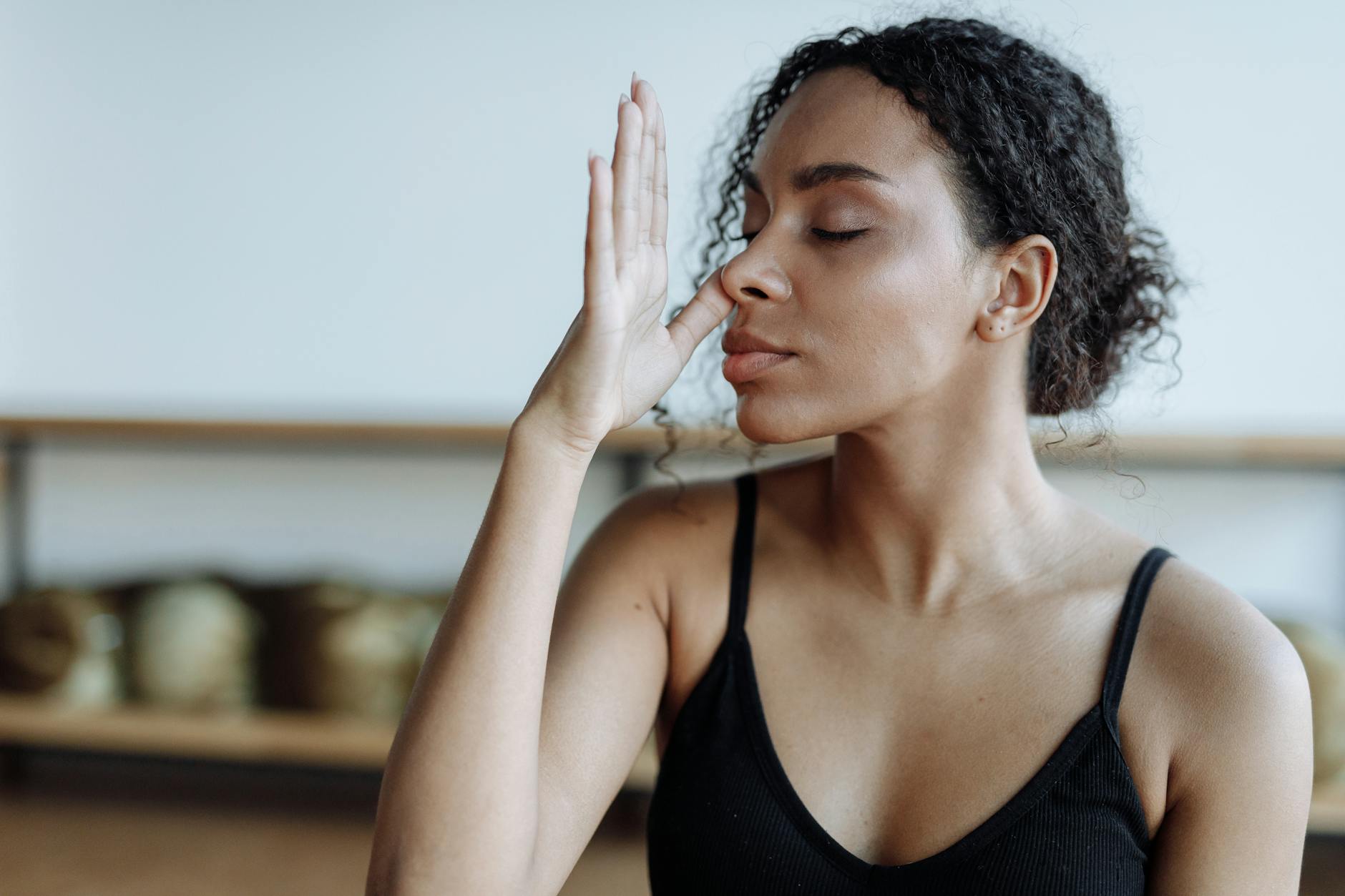🌟The Practice of Pranayama in Yoga: Breathing for Spiritual Growth🌿
As will be seen, pranayama is not simply a breathing exercise. It is steeped in ancient yoga principles and functions as a passage to bodily and mental health, as well as to enlightenment. People need to understand that with intentional breath work, one is ready to link their mind, body, and soul, towards self-actualization and spirituality.✨
👉What is Pranayama? 🧘♂️
Pranayama is a Sanskrit composed word in which “Prana” signifies energy or life and “Ayama” means to control. It’s not just the breath that is being regulated, but the life force is actively directed. By various methods, it connects the body with the mind and thus brings about coordination and equilibrium.
 Photo by Thirdman
Photo by Thirdman
✨The Origins of Pranayama🧘♂️
Pranayama is broadly defined as a set breath control techniques of which has been practiced since ancient India, as seen from Patanjali’s yoga sutras. This earliest text describes yoga as a lifestyle of appropriate action, posture, breathing techniques and self-knowledge or meditation. Ancient seers considered that by mastering pranayama a person can free himself/her self from the cycle of rebirth.
✨Pranayama and the Life Force (Prana)🌿
Prana, often called "life energy," flows through the body's energy channels or nadis. Pranayama techniques were specially designed to regulate and amplify this energy. By mastering prana, individuals can calm the mind, cleanse the body, and advance spiritually. As outlined by sources like Santosh Yoga Institute, pranayama isn't just an exercise—it’s a transformative experience.
👉Benefits of Practicing Pranayama💫
Pranayama offers a wide range of benefits for the body, mind, and spirit. Let’s explore how this ancient practice impacts overall well-being. 👇
1️⃣Physical Benefits
Pranayama is like a workout for your lungs and heart. Techniques like deep diaphragmatic breathing enhance lung efficiency and boost oxygen levels in the body. Consistent practice improves cardiovascular health, strengthens respiratory capacity, and purifies the system.
2️⃣Mental and Emotional Benefits
It’s no secret that focused breathing reduces stress and anxiety. When practiced regularly, pranayama calms the mind, improves emotional regulation, and fosters mental clarity. Studies have even connected pranayama with reduced cortisol levels, the stress hormone.
3️⃣Spiritual Growth and Self-Awareness
Pranayama works as a catalyst for spiritual awakening. It purifies energy channels, helping practitioners experience higher consciousness. According to Shivalaya Yoga Ashram, breathwork can bridge the gap between self and infinite awareness.
👉Types of Pranayama and Their Effects💫
Each pranayama technique has unique benefits. From inducing calm to energizing the body, the variety means there’s something for everyone. 👇
🌟Nadi Shodhana (Alternate Nostril Breathing)
This technique balances the nadis or energy channels. It reduces stress, encourages focus, and promotes mental stillness. Practicing Nadi Shodhana brings a sense of calm and equilibrium.
🌟Kapalabhati (Skull-Shining Breath)
Kapalabhati is an energizing practice. It involves rapid, forceful exhalations that activate your core and cleanse your mind. It wakes you up and prepares you for the day ahead.
🌟Bhramari (Bee Breath)
Named for the humming sound it generates, Bhramari soothes anxiety and quiets the racing mind. The vibrations created during this practice are deeply relaxing.
🌟Sheetali and Sheetkari (Cooling Breaths)
These techniques pull cool air into the body, making them perfect for hot days or heated tempers. They’re particularly helpful when dealing with stress or frustrations.
👉Incorporating Pranayama into Your Practice💫
Adding pranayama to your daily life takes some discipline but can be richly rewarding. Here’s how to get started. 👇
1️⃣ Preparation and Setting
Pick a quiet, well-ventilated area. Sit in a comfortable position with a straight spine. Focus on your breath while keeping distractions at bay.
2️⃣Guidance for Beginners
If you’re new, start simple. Techniques like deep diaphragmatic breathing or Nadi Shodhana are ideal for beginners. Ease into it gradually before trying advanced methods.
3️⃣Combining Pranayama with Yoga and Meditation
Pair pranayama with physical poses and meditation. Breathwork enhances yoga sessions by syncing movement with energy flow, while meditation deepens the focus on mindfulness.
👉Scientific Perspectives on Pranayama🌸
Modern research supports the countless claims of pranayama’s benefits. Science highlights how this traditional practice aligns with physiological and psychological well-being. 👇
1️⃣ Impact on the Nervous System
Pranayama activates the parasympathetic nervous system, responsible for relaxation. It reduces cortisol, helping the body recover from stress.
2️⃣ Cognitive and Emotional Benefits
Studies suggest consistent practice improves concentration, mindfulness, and emotional control. It's not just a claim—it can transform how you handle life’s ups and downs. Learn more from Integral Yoga Magazine.
3️⃣ Physical Health Outcomes
From improving lung function to enhancing sleep quality, pranayama offers practical health benefits. Research shows its positive impact on cardiovascular health and respiratory efficiency.
👉Conclusion🌟
Pranayama is a versatile practice offering tools for physical health, mental calm, and spiritual elevation. Whether you’re seeking stress relief or spiritual awakening, breathwork can guide you toward a more balanced and fulfilling life. Start small, be consistent, and let the power of prana transform you.
Ready to take that first breath of change? Embrace pranayama as part of your yoga journey and unlock your true potential.

.jpeg)
.jpeg)
.jpeg)
.jpg)


.jpeg)
0 Comments